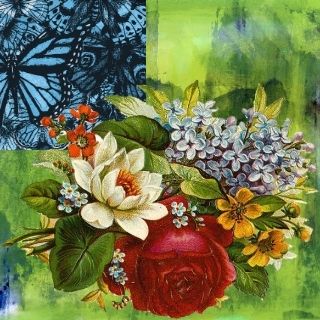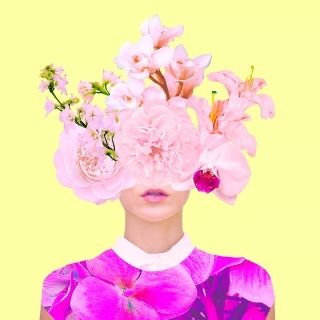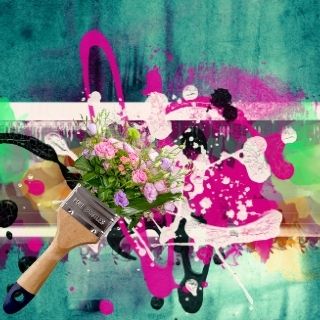Did you know that the term Collage was coined by cubist artists Picasso and Braque, more specifically papier collé which comes from the French word “Coller” which means “to glue”?
It is said that in 1912 Braque passed some wallpaper in a store that grabbed his attention so he brought it back to his studio and worked with it – cutting it into pieces and rearranging before pasting it to his canvas in a final image.
Excited by this new-to-him technique, he shares his finds with Picasso who in turn explores a collage phase of his own work. Although the term was coined during the 20th century, there is evidence of these techniques being used as early as 200 BC in China remarkably close to the same time as the invention of paper itself.
Collage is commonly associated with a few artistic movements Cubism, DADA and Surrealism. The Surrealists were the closest to what you may associate collaging with today – they used a cut-and-paste technique and funnelled their creativity through supplies they were attracted too as well as their subconscious to produce assembled images from a mixture of photos, illustrations, coloured paper, paint and other found materials. Many of these finished images inspire visions of dreams and wishes and invoke fantasy and storybook images.
As technology has changed and grown, collage seems to have followed. There are a great many ways and forms that collage can take one from 3D and sculptural to even musical collages. One may create collage with wood, photomontages, and now most recently within graphic design and marketing – digital collage.



Today, collage continues to be very popular as a way to art journal. Using any material one can find that inspires a spark; creators use their imaginations to combine paint, drawing, photos, cutouts, inks, stamps, ribbons, dried flowers and just about anything else that can be secured into a notebook to express themselves, experiment, or record ideas. There is also the benefit of not having to share it with anyone else.
Art journaling opens the door to a whole world of opportunity of expression without the pressure to share or explain. The practice of setting aside a small amount of time each day or week to create and explore is incredibly therapeutic and allows for soul searching, experimentation and to stretch one’s capabilities and imagination.
Collage is very accessible and quick to create, it is beloved for the ease it which it is to create without the need to have any specific artistic skills. It is an art form that is found in museums and private collections as well as classrooms around the world, inside counselling offices and hospital rooms. The creator’s only requirement is to find and create images that they are drawn to. People often identify with or project personal meanings on to images they view and create their own story, interpretations, or assumptions. Therefore, it is not a large leap to then take these images, textures, colours and items and arrange them into something that we can mirror about ourselves or our world.
We invite you to dip your own toe into the world of collage and see what you create!
Find Knox
5600 Balaclava Street
Vancouver, BC
V6N 1L1 Canada

Knox supports and encourages others to support ARTISTS as they find new ways to share their skills and work within our communities.
